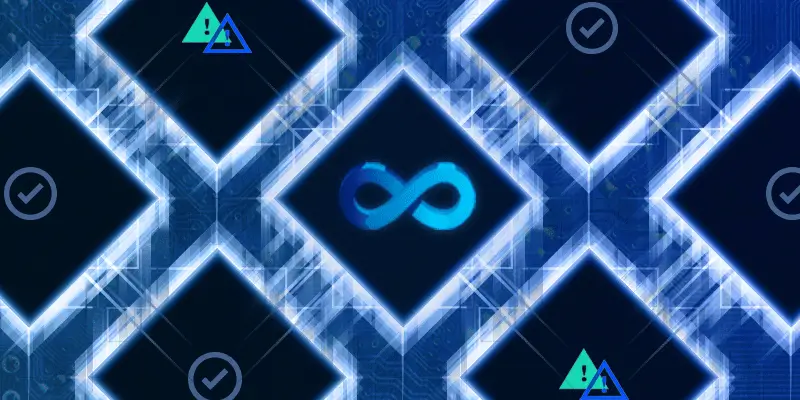Data security is an ongoing concern. The threats to your Salesforce data are constantly evolving, and so must your data security measures.
Cybercrime is definitely a threat, but it is not the only potential source of data loss or system corruption. In fact, the total damages associated with cybercrime are projected to cost $6 trillion in 2021.
Not every data security threat is as straightforward as a cybercriminal attempting to access your sensitive system information.
Salesforce system data can contain sensitive information for both your employees as well as your customers. Certain industries are required by government regulations to institute certain measures to protect this information. Failure to do so will result in stiff penalties and loss of consumer trust.
The first step to guarding against this information is to be aware of the potential threats. Proper security measures can be put in place once you are aware of each opportunity for improvement. This is why we’ve put together this list of risks and possible sources of Salesforce data loss.

Here are the top 8 security vulnerabilities for Salesforce DevOps:
1. Overexposed Data
Your Salesforce system data should only be available to the people that need to use it. More exposure creates more security risks.
This includes team members, third-party vendors, or even the public.
Anybody that can access system data has the ability to corrupt it through improper usage or bad intentions.
Segregating various aspects of your system will keep sensitive information from being accessed by those who don’t need to use it.
This can also be managed though updated user access settings. Each team member should only be able to access system data that directly relates to their position.
2. User Errors
Improper use of system information, accounts, or other generally bad habits can lead to data loss events, breaches, and more.
Accidental deletions are one of the main sources of data loss.
DevOps requires collaboration between multiple team members. Development teams themselves often involve multiple people working on a singular project. Overwrites and accidental deletions can lead to failed deployments, coding errors, and redundant work to get the project back on track.
Instituting communication protocols and a series of best practices will help to avoid this outcome. However, user errors are a mostly unavoidable eventuality. Utilize automation as much as possible to mitigate the effects.

3. Mechanical Failures
Working in the cloud might make it seem like these possibilities can be avoided, but that isn’t entirely true.
Software crashes, hardware failures, and even natural disasters can create a scenario that damages Salesforce system data.
Salesforce system data exists in many places. The devices used by individual team members will store information that is essential to the proper operation of your Salesforce instance.
System backups and restore functionality are essential to getting your Salesforce system back to operations should a mechanical failure impact your system. These events can’t be predicted, so preparation is essential to properly navigating them should they occur.
4. Third-Party Integrations
Every individual system is going to have its own requirements. The functionality you need to best serve your industry will likely require the usage of third-party integrations with your main system.
Hacks into third-party integrations can create an opening for cybercriminals to enter your system.
There have been plenty of examples of this. The recent Kroger pharmacy hack occurred when a file-transfer service was compromised. And while there are plenty of examples of this type of entry compromising large amounts of customer data—like the Experian data breach that affected hundreds of millions of people—the Kroger hack exposed the information of less than 1% of their customers.
This is because Kroger segregated their system, which put barriers between the different departments.
5. Neglected Aspects
As we said earlier, there are a lot of considerations relating to a successful DevOps pipeline. Taking this a step further and introducing security throughout the entire process—DevSecOps—requires constant attention to these vulnerabilities.
It can be easy to miss certain aspects of the process when attempting to take it in as a whole. This could come in the form of failing to update processes and procedures as time goes on.
Code quality checks, shared integrations, deployments—all of these aspects of a Salesforce DevOps pipeline need to be considered.
Team members can become wrapped up in the newest development project and fail to perform proper upkeep. Instituting automation whenever possible ensures these considerations don’t become neglected.
6. Unstable Coding Structures
The quality of code that makes up every software update or release will have a direct impact on the overall security level of your system.

Unstable code can create backdoors that can be exploited by cybercriminals. Broken functionality can also create situations that make it difficult for users to complete their actions, and potentially make errors that have negative impacts on the system as a whole.
Every integration of new code needs to be analyzed for how it works with the surrounding functionalities. Static code analysis provides visibility into code quality throughout the development pipeline.
7. No Contemporary Backup
A recent backup and the ability to quickly and efficiently restore it are essentials when it comes to Salesforce data security practices.
Preparation is essential to preventing certain types of data loss events, but you’ll never be able to prevent everything.
A reliable backup of your Salesforce data will get your system back to operations and minimize the harmful effects of a loss of service.
These backups can be automated so they don’t require the attention of a dedicated team member. This ensures you’ll have the coverage you need in the case of a data loss event without the expenditure of essential resources.
8. Complacency
It can be very easy to grow comfortable over time. But just because your system hasn’t been breached, or a hardware failure hasn’t erased massive amounts of data, or a team member hasn’t accidentally erased essential information—that doesn’t mean it won’t happen in the future.
You don’t need to spend every day worrying about data loss possibilities, but you should always be aware of the potential for a negative event.
Constant attention is required to keep your system safe and prepare for worst-case scenarios. Data security is an incredibly important consideration for both regulated and unregulated industries.
